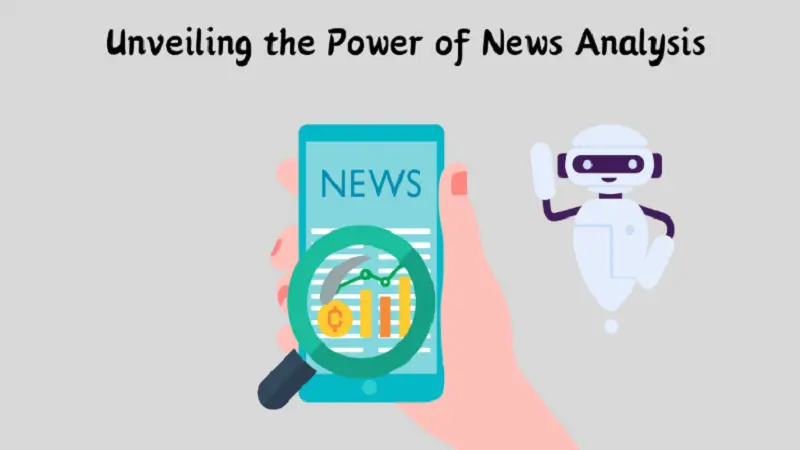In today’s fast-paced world, staying updated with the latest news can be overwhelming due to the sheer volume of information available. But what if there was a way to make this easier? Enter automated summaries, a groundbreaking tool powered by artificial intelligence (AI) that is set to revolutionize how we consume news.
This blog post will explore how AI-driven summaries simplify news aggregation and why they are crucial for modern readers.
What Are Automated Summaries?
Automated summaries use AI algorithms to condense lengthy news articles into shorter, easy-to-read summaries. By sifting through vast amounts of text, these algorithms extract key points, allowing readers to grasp the essence of a story in seconds.
How Do They Work?
AI models, like Natural Language Processing (NLP), scan articles for important information, identify patterns, and produce concise summaries. These models learn from vast datasets, improving over time to deliver increasingly accurate results.
Why Are They Becoming Popular?
The convenience factor cannot be overstated. With our lives becoming busier, automated summaries offer a quick way to stay informed without spending hours reading through multiple sources.
The Evolution of News Aggregation
News aggregation isn’t a new concept, but AI brings a whole new level of sophistication to it.
Early Days of News Aggregation
Initially, news aggregation involved simple techniques like RSS feeds, which compiled headlines and snippets from various sources. While useful, this method required manual effort to sift through articles.
Transition to Automation
With advancements in AI, news aggregation tools evolved, incorporating automated summaries that drastically reduced the time spent on manual curation. This transition marked the beginning of a more streamlined news consumption experience.
The Role of AI Today
Today, AI not only aggregates news but also categorizes and prioritizes it based on user preferences. This personalized touch ensures that readers receive the most relevant updates without the clutter.
Benefits of Automated Summaries
Automated summaries come with numerous advantages that make them indispensable for modern news consumption.
Time Efficiency
One of the most significant benefits is the time saved. Instead of reading multiple lengthy articles, users can quickly scan summaries to get the gist of the news.
Enhanced Focus
By eliminating unnecessary details, automated summaries help readers focus on the core message, making it easier to understand complex topics.
Improved Accessibility
For individuals with limited time or those who prefer concise information, automated summaries make news more accessible, ensuring that everyone can stay informed.
Real-World Applications
Automated summaries are not just theoretical; they have practical applications that benefit various sectors.
Journalism
Journalists use AI summaries to quickly gather information from multiple sources, allowing them to focus on analysis and in-depth reporting.
Educational Institutions
Educational platforms utilize automated summaries to provide students with condensed versions of academic articles, making learning more efficient.
Workplace Search
Within corporate environments, automated summaries enhance workplace search by providing employees with quick access to relevant information, improving productivity.
AI in Action
Several companies have already integrated AI-driven summaries into their platforms, showcasing the potential of this technology.
Google News
Google News uses AI to aggregate and summarize articles from various sources, offering users a streamlined news experience tailored to their interests.
Apple News
Apple News adopts a similar approach, curating content based on user preferences and providing concise summaries for quick consumption.
Smart News Apps
Numerous smart news apps leverage AI to deliver personalized news feeds, complete with automated summaries that highlight the most important points.
Challenges and Limitations
While automated summaries offer numerous benefits, they are not without challenges.
Accuracy Issues
AI models are not perfect and may sometimes miss critical details or misinterpret information, leading to inaccurate summaries.
Bias in Algorithms
Bias in AI algorithms can result in skewed summaries that do not represent the full spectrum of perspectives, potentially misleading readers.
Dependence on Algorithms
Over-reliance on automated summaries might discourage readers from engaging with full articles, affecting their overall understanding of complex issues.
The Future of Automated Summaries
Despite these challenges, the future of automated summaries looks promising, with continuous advancements in AI technology.
Improving Accuracy
Ongoing research aims to refine AI algorithms, enhancing their ability to produce more accurate and comprehensive summaries.
Reducing Bias
Efforts are being made to address algorithmic bias, ensuring that AI-generated summaries present a balanced view of news stories.
Expanding Applications
The potential applications of automated summaries are vast, from enhancing educational tools to improving corporate communication and beyond.
Conclusion
Automated summaries hold immense potential to simplify news aggregation, making it more efficient and accessible. By leveraging AI, we can stay informed without being overwhelmed by information overload. As technology continues to advance, the impact of AI-driven summaries on our daily lives will only grow, transforming how we consume and interact with news.
